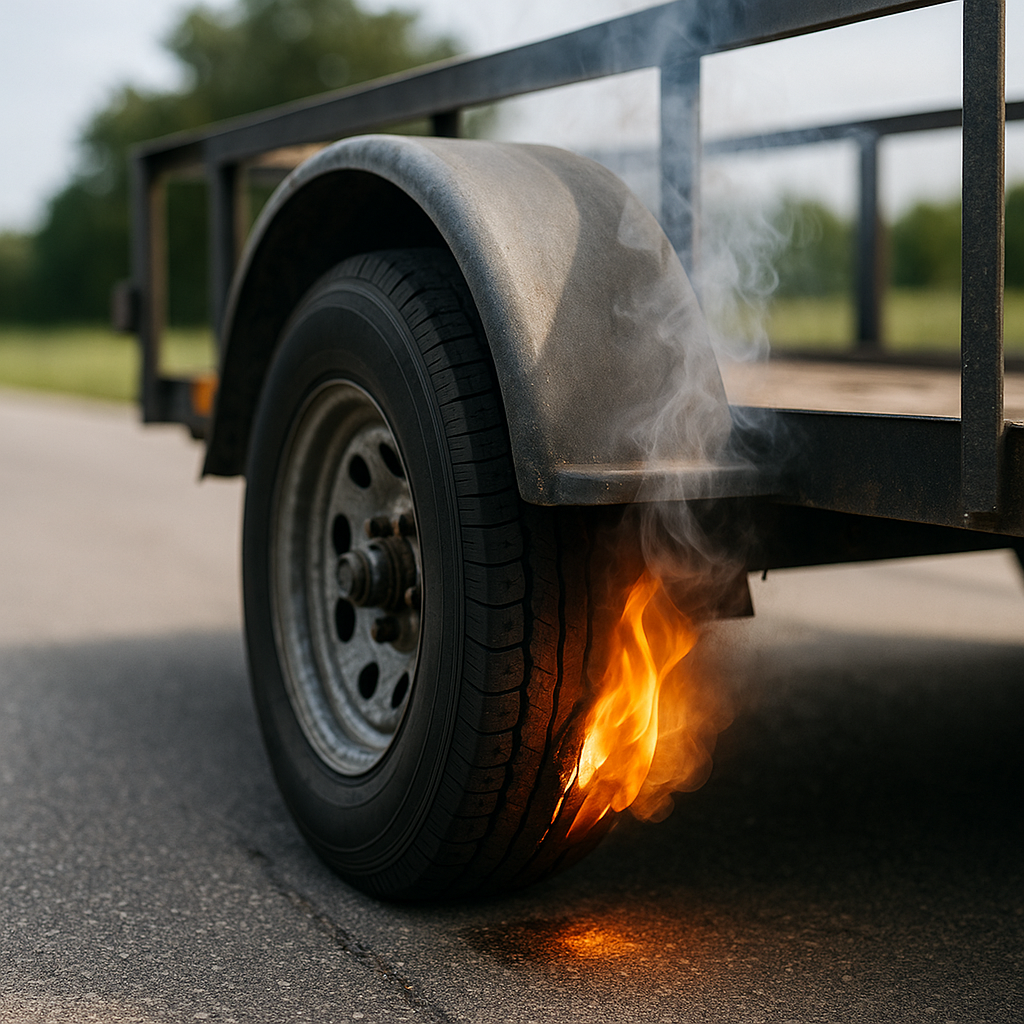In the world of heavy-duty transportation, maintaining optimal tire pressure is crucial for the safety and performance of semi trailers. This is where a tire pressure monitoring system for semi trailer comes into play. These advanced systems are designed to provide real-time data regarding tire pressure, ensuring that drivers and fleet managers can monitor the condition of their tires at all times.
By utilizing a tire pressure monitoring system, operators can significantly reduce the risk of tire blowouts, which are not only dangerous but can also lead to costly repairs and downtime. The technology behind these systems typically includes sensors that are installed directly on the wheels, which continually send data to a central unit or mobile app. This constant monitoring allows for quick detection of any irregularities, enabling timely interventions.
The benefits of integrating a tire pressure monitoring system extend beyond safety; they also promote fuel efficiency and prolong tire life. When tires are inflated to the correct pressure, it reduces rolling resistance, which in turn enhances fuel economy. Furthermore, maintaining proper tire pressure can help avoid uneven wear, thereby extending the lifespan of the tires.
With advancements in technology, more sophisticated features have been introduced, such as alerts for low pressure and even temperature readings. These innovations empower drivers to make informed decisions, ultimately leading to safer and more efficient transportation.
Tow with peace of mind, knowing that trailerwatchdog is standing guard.
Key Benefits of Tire Pressure Monitoring Systems

Implementing a tire pressure monitoring system for semi trailers offers numerous benefits that significantly enhance the safety, efficiency, and performance of heavy-duty vehicles. Understanding these key advantages can help fleet managers and drivers appreciate the value of these systems.
- Enhanced Safety: Ensuring that tires are properly inflated reduces the likelihood of blowouts and tire-related accidents. By receiving real-time alerts about tire pressure changes, drivers can take immediate action to address any issues, thereby enhancing overall road safety.
- Increased Fuel Efficiency: Under-inflated tires can lead to greater rolling resistance, which means that more fuel is required to maintain speed. Properly inflated tires can improve fuel economy, resulting in significant savings over time.
- Extended Tire Life: Maintaining optimal tire pressure prevents uneven wear and tear. This not only prolongs the lifespan of the tires but also reduces the frequency and costs associated with replacements.
- Reduced Downtime: Regular monitoring prevents unexpected tire failures that can lead to costly downtime. Fleet operators can plan maintenance more effectively, ensuring that vehicles are on the road when they are needed most.
- Data-Driven Decisions: Many tire pressure monitoring systems provide detailed analytics and reports. This data can help fleet managers make informed decisions regarding maintenance schedules and operational strategies.
Investing in a tire pressure monitoring system is a proactive approach to managing fleet safety and operational efficiency. With the right technology in place, drivers and fleet operators can enjoy peace of mind while on the road.
How Tire Pressure Affects Semi Trailer Performance

The performance of a semi trailer is heavily influenced by tire pressure, making it essential for operators to understand this relationship. Tire pressure directly impacts various aspects of vehicle operation, including handling, safety, and efficiency.
When tire pressure is too low, it can lead to several performance issues:
- Poor Handling: Under-inflated tires can cause a semi trailer to handle poorly, especially during cornering or emergency maneuvers. This can compromise the driver’s control and increase the risk of accidents.
- Increased Stopping Distance: Adequate tire pressure is critical for effective braking. Low pressure can extend stopping distances, making it more challenging for drivers to react in critical situations.
- Higher Fuel Consumption: As mentioned earlier, tires that are not properly inflated create more rolling resistance. This means the engine must work harder, leading to increased fuel consumption and higher operational costs.
Conversely, over-inflation also poses risks:
- Reduced Traction: Over-inflated tires have less surface contact with the road, which can decrease traction. This is particularly dangerous in wet or slippery conditions.
- Uneven Wear: Tires that are over-inflated tend to wear more in the center, leading to a shorter lifespan and increased replacement costs.
In conclusion, maintaining the correct tire pressure is crucial for optimizing the performance of semi trailers. Regular monitoring through a tire pressure monitoring system for semi trailers ensures that drivers can maintain tire health, enhancing safety and operational efficiency on the road.
Technology Behind Tire Pressure Monitoring Systems
The technology behind tire pressure monitoring systems (TPMS) has evolved significantly, providing real-time insights into tire conditions and enhancing safety for semi trailers. These systems are designed to monitor tire pressure and temperature, alerting drivers to any irregularities.
Modern TPMS typically consist of two main components:
- Sensor Units: These small sensors are mounted inside the tire or on the valve stem and are responsible for measuring the tire's air pressure and temperature. They transmit data wirelessly to a central receiver, often integrated into the vehicle’s dashboard.
- Display Interface: This component receives data from the sensors and displays it in an easily readable format for the driver. It may include visual and audible alerts when tire pressure falls outside the designated range.
There are two primary types of TPMS:
- Direct TPMS: This system uses sensors mounted on each tire to provide real-time data. It delivers accurate pressure readings and alerts drivers immediately when a tire is under-inflated or overheating.
- Indirect TPMS: This system relies on the vehicle's ABS (anti-lock braking system) to monitor tire rotation speed. If one tire is under-inflated, it will rotate at a different speed than the others, triggering an alert.
Advanced TPMS models also incorporate features such as:
- Remote Monitoring: Many systems now offer mobile applications that allow fleet managers to monitor tire conditions from anywhere, ensuring timely interventions.
- Data Analytics: Some systems provide analytics on tire performance over time, helping operators make informed decisions regarding tire maintenance and replacement.
This sophisticated technology not only enhances the safety of semi trailers but also contributes to overall efficiency and cost savings in fleet operations.
Installation and Maintenance of Tire Pressure Monitoring Systems

Installing a tire pressure monitoring system (TPMS) on your semi trailer is a crucial step towards enhancing safety and performance. The installation process can vary depending on the type of TPMS selected, but generally, it involves a few key steps:
- Choosing the Right System: Before installation, it's important to select a TPMS that meets your specific needs. Consider factors such as sensor type, display interface, and whether you prefer a direct or indirect system.
- Sensor Installation: For direct TPMS, sensors are mounted inside the tire or on the valve stem. This may require professional assistance, as tires need to be demounted to properly install internal sensors. Ensure that sensors are securely attached to prevent any loss during operation.
- Connecting the Display Interface: The display unit should be installed within the driver's line of sight, usually on the dashboard. This may involve wiring the unit to the vehicle's power supply, ensuring it operates seamlessly with the vehicle's electrical system.
- Calibration: Once installed, the system must be calibrated to ensure accurate readings. This often involves setting the recommended tire pressures and confirming that all sensors are communicating effectively with the display interface.
Once installed, regular maintenance is essential to ensure the TPMS continues to function correctly:
- Routine Checks: Regularly inspect the system for any alerts or warning lights. Monitoring tire pressure and temperature readings can help catch issues before they escalate.
- Battery Replacement: Many TPMS sensors are battery-operated. Be proactive about replacing batteries according to the manufacturer's recommendations to prevent sensor failure.
- Software Updates: Some advanced TPMS models offer software updates that enhance functionality or fix bugs. Stay updated to take advantage of new features.
- Professional Inspections: Consider scheduling professional inspections during regular maintenance checks to ensure the system is functioning properly and to address any potential issues promptly.
By following these installation and maintenance guidelines, you can ensure that your TPMS remains effective, providing peace of mind and enhancing the safety of your semi trailer.
Future Trends in Semi Trailer Tire Monitoring Technology

The landscape of tire monitoring technology for semi trailers is rapidly evolving, driven by advancements in technology and an increasing focus on safety and efficiency. Here are some anticipated trends in the coming years:
- Integration with IoT: The Internet of Things (IoT) is set to revolutionize tire monitoring systems. Future TPMS will likely connect to a broader network, allowing real-time data sharing across multiple platforms. This integration can facilitate proactive maintenance and better fleet management.
- Advanced Data Analytics: With the accumulation of vast amounts of tire data, advanced analytics will become crucial. Predictive analytics will enable fleet operators to foresee potential tire issues before they occur, reducing downtime and preventing accidents.
- Enhanced Sensor Technology: Future tire sensors are expected to become more sophisticated, offering improved accuracy and reliability. Innovations such as self-calibrating sensors and those capable of monitoring additional parameters (like tread depth and road surface conditions) will enhance overall safety.
- Automated Alerts and Notifications: As systems become more integrated, automated alerts sent directly to operators or maintenance teams will ensure that any irregularities are promptly addressed, minimizing the risk of failure.
- Eco-Friendly Solutions: The industry is also moving towards sustainability. New tire monitoring technologies may focus on optimizing tire performance to reduce fuel consumption and emissions, contributing to greener transportation practices.
With these trends on the horizon, it's clear that the future of tire monitoring technology will bring even greater advantages to fleet operators. Staying ahead of these innovations is crucial for maintaining competitive edge and safety in the transport industry.
Tow with peace of mind, knowing that trailerwatchdog is standing guard.








